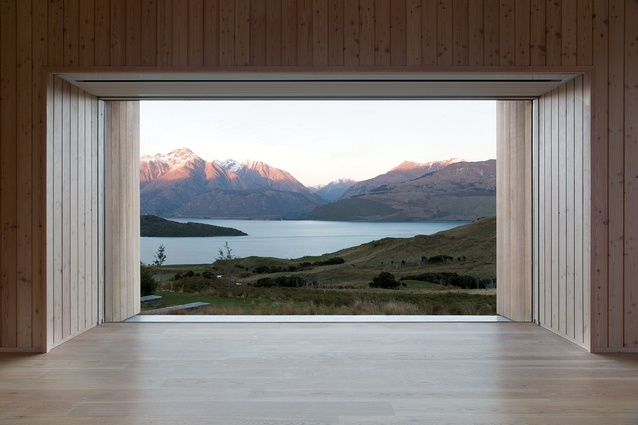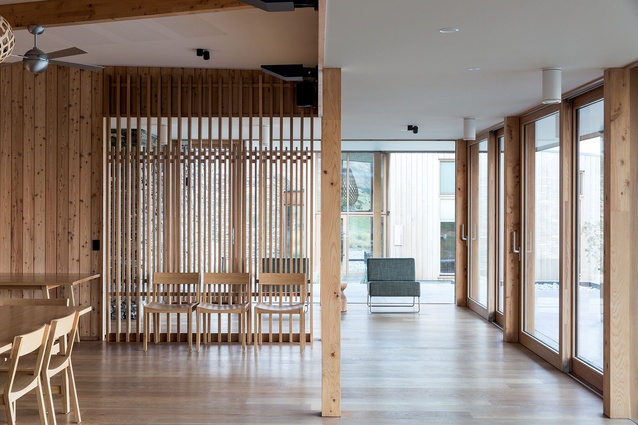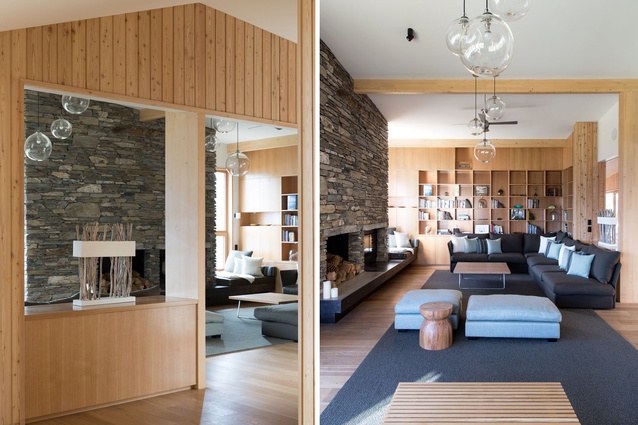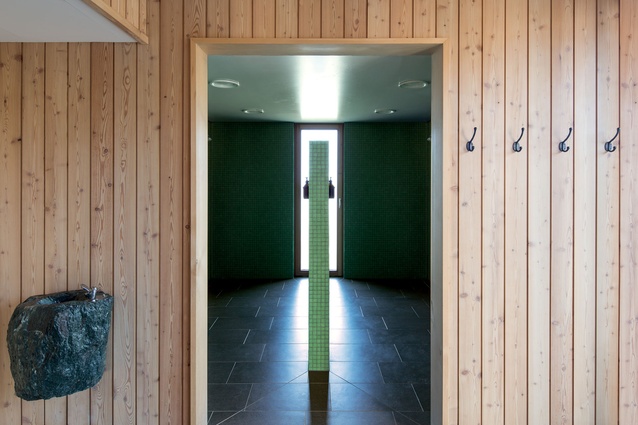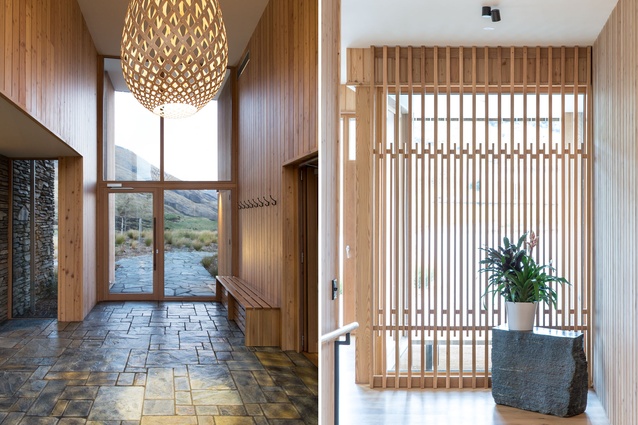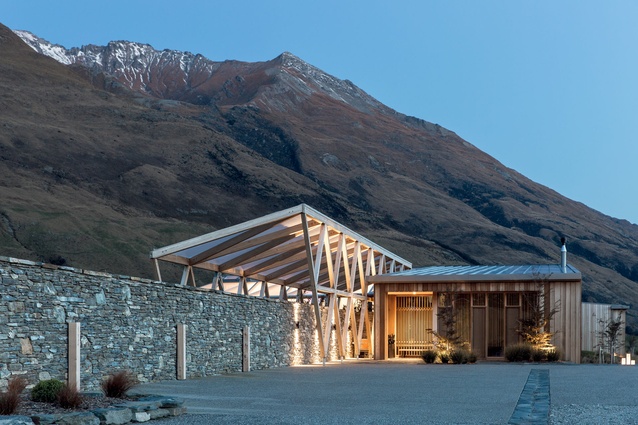Aro Hā
The quest for spiritual meaning has always been closely bound to architecture and design. Yet, in an era of decreased interest in religion (according to the 2013 census, 41.9% of New Zealanders claim to have no affiliation), what will replace the cathedrals, mosques, temples and their respective wealth of iconography?
The answers are probably in the thousands but an interesting little case study rests a mere 40-minute drive from Queenstown.
The path to Glenorchy is a tug-o-war between awe-inspiring views and the need to keep one’s eyes on the curvy road that borders Lake Wakatipu and the serrated skirt of the nearby ranges.
It is here that 38-year-old former IT consultant, New Mexico (USA) expat Damian Chaparro and a business partner went about setting up Aro Hā, a minimalist but thoroughly thought-out retreat closely driven by sustainability and alternative practices for well-being. Guests to the $24-million retreat do yoga, mindfulness, meditation and other similar rituals in a setting that – through design, food and exercises – puts nature at the centre of the experience.

“We don’t follow or teach any religion. We have taken various practices and incorporated them into alternative wellness,” explains Chaparro.
One of the things that attracted him to the project’s eventual architects (Tennent+Brown) was the fact that one of the firm’s principals, Hugh Tennent, “has an in-depth experience with these sorts of environments. He has made his mark in creating sacred spaces… he actually understood what we were trying to do.”
According to Chaparro, simplicity was one of the main drivers in creating the interior of this place: “we wanted it to feel more like a monastery than a luxury hotel. So all the rooms are small, all the spaces are appropriately sized, the glass isn’t over the top… [there’s an] appropriate amount of light, lots of timber, lots of natural materials.”
“We did a lot of research into what the retreat’s agenda was about – there are very few precedents for it – certainly in New Zealand. This meant a deep analysis of the definition of luxury and we had to continuously break down preconceived notions of this,” adds Michelle Freeman of Polish Design Workshop, the Queenstown-based interior design practice charged with defining the interior after Tennent+Brown finished construction.
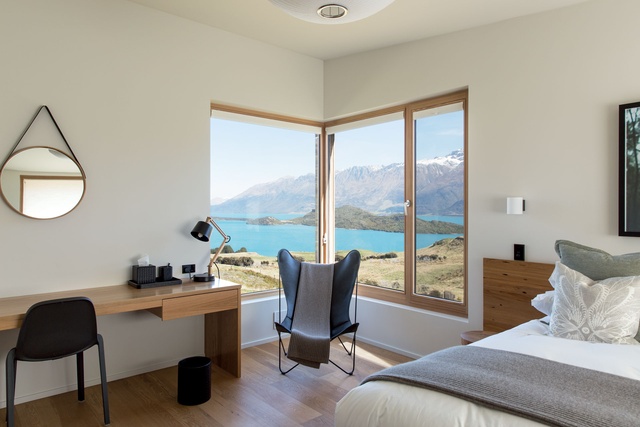
“Aro Hā’s interior encourages a focus on the essential elements of being – eating, sleeping, bathing, breathing and moving. We set parameters for choice of finishes, fittings and furniture; they had to hover around comfort and luxury without tipping into excess. Each element had to be perfectly fit for its use… The palette is minimal, natural, textural and tactile, supporting these fundamental activities without being distracting,” continues Freeman.
Given the retreat’s stunning location and some of the Eastern-inspired philosophies fuelling its usage, nature played a pivotal role here. Some of the layout was inspired by ideas of permaculture (food sources need to be placed strategically next to the food preparation and consumption areas), with one of the United States’ ‘grandfathers’ of the movement (Doug Bullock) engaged as a consultant from the early design stages.
Material choices were consistent and chosen to echo, subtly, the landscape. “We used materials that describe the texture of the land, which created a subtle vibe rather than an obvious statement. The finishes draw on the colours of the region’s flora and fauna – and, as a result, the spaces are beautiful, calm and quiet,” said Freeman. The architects, likewise, chose materials that blended the building into its surrounds and interior timbers (such as the one used in the retreat’s main communal space, the Aro Hā room) seek to provide a “quality of calm.”
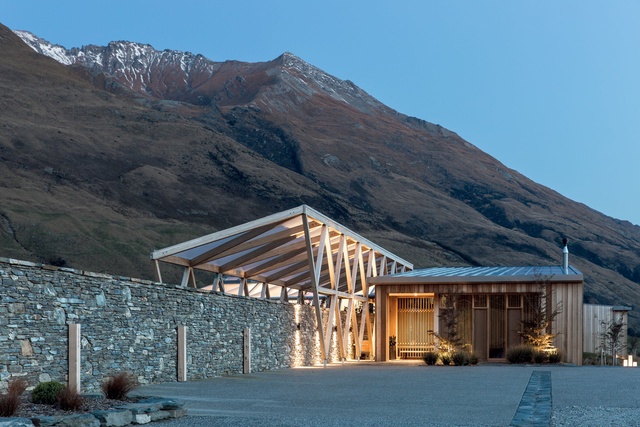
There is also a continuation of materials used on exterior elements of the building, including schist walls and stone paving which flows seamlessly into the interior of the communal spaces of the building. The majestic surrounding landscape continues to surround you, even when you are sheltered inside the more hospitable interior.
Yet the landscape served not just as inspiration for construction materials but – in its role as a canvas onto which nature and time spread a variety of colours – it also dictated major architectural choices. Chaparro, who originally wanted to angle the building toward the lake, making the most out of its postcard-ready sights, confesses that the architect perceived a different view.
“Hugh [Tennent], from day one, saw that the Greenstone Valley, directly across from us had this particular stillness and would have this unique, ever-changing kaleidoscope of moods throughout the day… he was absolutely right,” says Chaparro.
He insists that another of the retreat’s aims was to reconnect people with nature; therefore, the place was divided into several buildings without many internal connections. “We made a decision early on to kind of sprinkle across the landscape… we imagined the guests walking in the early-morning sunrise from their accommodation to yoga or, in the evenings, walking back to the spa, and we wanted them to be moving through nature.”

Interior spaces are peppered and informed by the experiences gathered in the movement between the varying rooms; the transitions become part of how one experiences the interiors.
As a way to maintain and keep the environment pristine, Chaparro and co. spent a considerable amount of time and resources on making the retreat self-sustaining. They aim to, eventually, provide all of the food and energy required to run the place. Power from a cascading mountain stream that runs by the retreat is harnessed and contributes an average of 28kWh to the Aro Hā power scheme. Solar energy heats water through evacuated tubes on the roof, which in turn heats the retreat and hot tub.
“We wanted to create a model that we hoped would inspire communities to behave in the way we are behaving,” continues Chaparro. “In a way we have created our own island.”
So… is Aro Hā, laterally speaking, a sort of modern day cathedral? “It is,” says Chaparro, “but without the dogma.”
To read more about the Aro Hã retreat click here. To see the construction of this project, click here.

